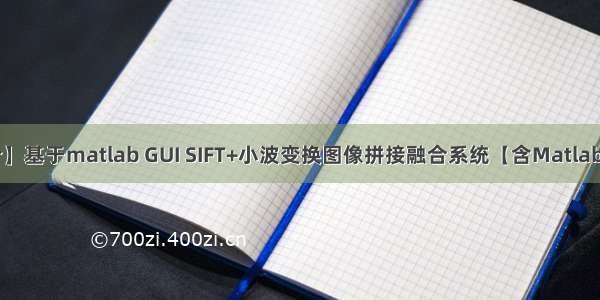
之前运行OpenCV官方示例的cpp时 看到stitching.cpp拼接融合还不错 然后我在MATLAB上 用之前编的经纬映射法校正三幅鱼眼图像后 不知道该怎样保存下校正好的图 如果save或者save as 那么会有figure的白色边缘 不能用来拼接 所以我直接截图 保存为jpg 这样就没有白色边缘了:
校正后的:然后把这三幅MATLAB运行出来的结果 传递给OpenCV的stitching.cpp 然后运行出来:
现在开始分析图像拼接融合的源码:stitching.cpp:
#include <iostream>
#include <fstream>
#include "opencv2/highgui/highgui.hpp"
#include "opencv2/stitching/stitcher.hpp"
using namespace std;
using namespace cv;
bool try_use_gpu = false;
vector<Mat> imgs;
string result_name = "result3.jpg"; //保存全景图的文件名 可以在工程目录下找到
void printUsage();
int parseCmdArgs(int argc, char** argv);
int main(int argc, char* argv[])
{
int retval = parseCmdArgs(argc, argv);
if (retval) return -1;
Mat pano;
Stitcher stitcher = Stitcher::createDefault(try_use_gpu); //这个函数默认不使用GPU!
Stitcher::Status status = stitcher.stitch(imgs, pano); //找寻待拼接的两幅图的旋转角度 并生成最后的全景图 这个函数才是要分析的重头戏!
if (status != Stitcher::OK) //确保拼接成功
{
cout << "Can't stitch images, error code = " << int(status) << endl;
return -1;
}
namedWindow("stitching result");
imshow("stitching result", pano);
waitKey(0);
imwrite(result_name,pano);
return 0;
}
void printUsage() //默认不用GPU
{
cout <<
"Rotation model images stitcher.\n\n"
"stitching img1 img2 [...imgN]\n\n"
"Flags:\n"
" --try_use_gpu (yes|no)\n"
" Try to use GPU. The default value is 'no'. All default values\n"
" are for CPU mode.\n"
" --output <result_img>\n"
" The default is 'result.jpg'.\n";
}
int parseCmdArgs(int argc, char** argv) //这个函数就是读入待拼接的图片 放在imgs这个装待拼图片的容器里面
{
if (argc == 1)
{
printUsage();
return -1;
}
for (int i = 1; i < argc; ++i)
{
if (string(argv[i]) == "--help" || string(argv[i]) == "/?")
{
printUsage();
return -1;
}
else if (string(argv[i]) == "--try_use_gpu")
{
if (string(argv[i + 1]) == "no")
try_use_gpu = false;
else if (string(argv[i + 1]) == "yes")
try_use_gpu = true;
else
{
cout << "Bad --try_use_gpu flag value\n";
return -1;
}
i++;
}
else if (string(argv[i]) == "--output")
{
result_name = argv[i + 1];
i++;
}
else
{
Mat img = imread(argv[i]);
if (img.empty())
{
cout << "Can't read image '" << argv[i] << "'\n";
return -1;
}
imgs.push_back(img);
}
}
return 0;
}
上面stitching.cpp很好理解 现在来看涉及图像拼接、融合的函数源码:Stitcher::Status status = stitcher.stitch(imgs, pano); 用CMake打开源码 查看源码:
可以看到stitcher类下各个函数的定义 stitch()是可重载的 而程序里用的是第一个形式 这个定义非常简单 所以接下来又需要去看Status status = estimateTransform(images, rois);(估算几幅待拼图之间的关系 比如仿射变换 旋转 平移 缩放等等)和composePanorama(pano);(图像融合 组成全景图)这两个函数的定义 estimateTransform也简短
Stitcher::Status Stitcher::estimateTransform(InputArray images, const vector<vector<Rect> > &rois)
{
images.getMatVector(imgs_);
rois_ = rois;
Status status;
if ((status = matchImages()) != OK) //要看这个的源码
return status;
//接下来还要看这个函数estimateCameraParams();(估算相机参数)的源码
estimateCameraParams();
return OK;
}
于是又接着找到:
Stitcher::Status Stitcher::matchImages()
{
if ((int)imgs_.size() < 2)
{
LOGLN("Need more images");
return ERR_NEED_MORE_IMGS; //待拼图像不能少于2幅图
}
work_scale_ = 1;
seam_work_aspect_ = 1;
seam_scale_ = 1;
bool is_work_scale_set = false;
bool is_seam_scale_set = false;
Mat full_img, img;
features_.resize(imgs_.size()); //这是??
seam_est_imgs_.resize(imgs_.size());
full_img_sizes_.resize(imgs_.size());
LOGLN("Finding features...");
#if ENABLE_LOG
int64 t = getTickCount(); //找寻特征点计时
#endif
for (size_t i = 0; i < imgs_.size(); ++i)
{
full_img = imgs_[i]; //依次读取每幅待拼图像给full_img
full_img_sizes_[i] = full_img.size(); //将每次读入图像的大小mxn给full_img_sizes
//registr_resol_是图像匹配的分辨率大小,图像的面积尺寸变为registr_resol_*100000 ??
if (registr_resol_ < 0)
{
img = full_img;
work_scale_ = 1;
is_work_scale_set = true;
}
else
{
if (!is_work_scale_set)
{
//预处理 将图像缩放full_img.size().area()表示面积m、n的乘积
//计算work_scale,将图像resize到面积在registr_resol_*10^6以下
work_scale_ = min(1.0, sqrt(registr_resol_ * 1e6 / full_img.size().area()));
is_work_scale_set = true;
}
//将full_img和img的尺寸都缩放到计算出来的work_scale_下?!
resize(full_img, img, Size(), work_scale_, work_scale_);
}
if (!is_seam_scale_set)
{
//seam_est_resol_是拼接缝像素的大小,和匹配默认值一样有默认值?
seam_scale_ = min(1.0, sqrt(seam_est_resol_ * 1e6 / full_img.size().area()));
seam_work_aspect_ = seam_scale_ / work_scale_; //和上个if中的差不多意思
is_seam_scale_set = true;
}
if (rois_.empty())
//如果rois_是空矩阵 就找寻特征点给features_ (这个待会看源码)
(*features_finder_)(img, features_[i]);
else
{
vector<Rect> rois(rois_[i].size());
for (size_t j = 0; j < rois_[i].size(); ++j)
{
Point tl(cvRound(rois_[i][j].x * work_scale_), cvRound(rois_[i][j].y * work_scale_));
Point br(cvRound(rois_[i][j].br().x * work_scale_), cvRound(rois_[i][j].br().y * work_scale_));
rois[j] = Rect(tl, br);
}
(*features_finder_)(img, features_[i], rois);
}
features_[i].img_idx = (int)i; //说明是第几幅图的特征点
LOGLN("Features in image #" << i+1 << ": " << features_[i].keypoints.size());
//将源图像resize到seam_scale_*10^6,并存入seam_est_imgs_[]中
resize(full_img, img, Size(), seam_scale_, seam_scale_);
seam_est_imgs_[i] = img.clone();
}
// Do it to save memory
features_finder_->collectGarbage(); //这里要看源码!!怎么找寻的
full_img.release(); //release释放 待会儿去读下一幅图
img.release();
//找寻特征点至此结束 计算出时间
LOGLN("Finding features, time: " << ((getTickCount() - t) / getTickFrequency()) << " sec");
LOG("Pairwise matching");
#if ENABLE_LOG
t = getTickCount(); //开始进行匹配match
#endif
(*features_matcher_)(features_, pairwise_matches_, matching_mask_);
features_matcher_->collectGarbage(); //要看源码!!
LOGLN("Pairwise matching, time: " << ((getTickCount() - t) / getTickFrequency()) << " sec"); //匹配结束
// Leave only images we are sure are from the same panorama
//conf_thresh_是两幅图来自同一全景图的置信度 来判断读入的图片是否属于同一全景图
indices_ = detail::leaveBiggestComponent(features_, pairwise_matches_, (float)conf_thresh_);
vector<Mat> seam_est_imgs_subset;
vector<Mat> imgs_subset;
vector<Size> full_img_sizes_subset;
for (size_t i = 0; i < indices_.size(); ++i)
{
imgs_subset.push_back(imgs_[indices_[i]]);
seam_est_imgs_subset.push_back(seam_est_imgs_[indices_[i]]);
full_img_sizes_subset.push_back(full_img_sizes_[indices_[i]]);
}
seam_est_imgs_ = seam_est_imgs_subset;
imgs_ = imgs_subset;
full_img_sizes_ = full_img_sizes_subset;
//检查由上述筛选来自同一副全景图的图片的数量是否大于2幅图
if ((int)imgs_.size() < 2)
{
LOGLN("Need more images");
return ERR_NEED_MORE_IMGS;
}
return OK;
}
结合这个人的/hanshuning/article/details/41960401和这个人的/content-10-8390-1.html分析上面的
在matchImage()分析完后 要分析estimateCameraParams():
void Stitcher::estimateCameraParams()
{
detail::HomographyBasedEstimator estimator;
estimator(features_, pairwise_matches_, cameras_);
for (size_t i = 0; i < cameras_.size(); ++i)
{
Mat R;
cameras_[i].R.convertTo(R, CV_32F);
cameras_[i].R = R;
LOGLN("Initial intrinsic parameters #" << indices_[i] + 1 << ":\n " << cameras_[i].K());
}
bundle_adjuster_->setConfThresh(conf_thresh_);
(*bundle_adjuster_)(features_, pairwise_matches_, cameras_);
// Find median focal length and use it as final image scale
vector<double> focals;
for (size_t i = 0; i < cameras_.size(); ++i)
{
LOGLN("Camera #" << indices_[i] + 1 << ":\n" << cameras_[i].K());
focals.push_back(cameras_[i].focal);
}
std::sort(focals.begin(), focals.end());
if (focals.size() % 2 == 1)
warped_image_scale_ = static_cast<float>(focals[focals.size() / 2]);
else
warped_image_scale_ = static_cast<float>(focals[focals.size() / 2 - 1] + focals[focals.size() / 2]) * 0.5f;
if (do_wave_correct_)
{
vector<Mat> rmats;
for (size_t i = 0; i < cameras_.size(); ++i)
rmats.push_back(cameras_[i].R);
detail::waveCorrect(rmats, wave_correct_kind_);
for (size_t i = 0; i < cameras_.size(); ++i)
cameras_[i].R = rmats[i];
}
}
接下来生成全景图(图像融合等):composePanorama(pano);即看这个函数的源码
Stitcher::Status Stitcher::composePanorama(OutputArray pano)
{
return composePanorama(vector<Mat>(), pano); //就这一句 继续追踪下去 查看composePanorama(vector<Mat>(), pano);的源码
}
如下所示:
Stitcher::Status Stitcher::composePanorama(InputArray images, OutputArray pano)
{
LOGLN("Warping images (auxiliary)... ");
vector<Mat> imgs;
images.getMatVector(imgs);
if (!imgs.empty())
{
CV_Assert(imgs.size() == imgs_.size());
Mat img;
seam_est_imgs_.resize(imgs.size());
for (size_t i = 0; i < imgs.size(); ++i)
{
imgs_[i] = imgs[i];
resize(imgs[i], img, Size(), seam_scale_, seam_scale_);
seam_est_imgs_[i] = img.clone();
}
vector<Mat> seam_est_imgs_subset;
vector<Mat> imgs_subset;
for (size_t i = 0; i < indices_.size(); ++i)
{
imgs_subset.push_back(imgs_[indices_[i]]);
seam_est_imgs_subset.push_back(seam_est_imgs_[indices_[i]]);
}
seam_est_imgs_ = seam_est_imgs_subset;
imgs_ = imgs_subset;
}
Mat &pano_ = pano.getMatRef();
#if ENABLE_LOG
int64 t = getTickCount();
#endif
vector<Point> corners(imgs_.size());
vector<Mat> masks_warped(imgs_.size());
vector<Mat> images_warped(imgs_.size());
vector<Size> sizes(imgs_.size());
vector<Mat> masks(imgs_.size());
// Prepare image masks
for (size_t i = 0; i < imgs_.size(); ++i)
{
masks[i].create(seam_est_imgs_[i].size(), CV_8U);
masks[i].setTo(Scalar::all(255));
}
// Warp images and their masks
Ptr<detail::RotationWarper> w = warper_->create(float(warped_image_scale_ * seam_work_aspect_));
for (size_t i = 0; i < imgs_.size(); ++i)
{
Mat_<float> K;
cameras_[i].K().convertTo(K, CV_32F);
K(0,0) *= (float)seam_work_aspect_;
K(0,2) *= (float)seam_work_aspect_;
K(1,1) *= (float)seam_work_aspect_;
K(1,2) *= (float)seam_work_aspect_;
corners[i] = w->warp(seam_est_imgs_[i], K, cameras_[i].R, INTER_LINEAR, BORDER_REFLECT, images_warped[i]);
sizes[i] = images_warped[i].size();
w->warp(masks[i], K, cameras_[i].R, INTER_NEAREST, BORDER_CONSTANT, masks_warped[i]);
}
vector<Mat> images_warped_f(imgs_.size());
for (size_t i = 0; i < imgs_.size(); ++i)
images_warped[i].convertTo(images_warped_f[i], CV_32F);
LOGLN("Warping images, time: " << ((getTickCount() - t) / getTickFrequency()) << " sec");
// Find seams
exposure_comp_->feed(corners, images_warped, masks_warped);
seam_finder_->find(images_warped_f, corners, masks_warped);
// Release unused memory
seam_est_imgs_.clear();
images_warped.clear();
images_warped_f.clear();
masks.clear();
LOGLN("Compositing...");
#if ENABLE_LOG
t = getTickCount();
#endif
Mat img_warped, img_warped_s;
Mat dilated_mask, seam_mask, mask, mask_warped;
//double compose_seam_aspect = 1;
double compose_work_aspect = 1;
bool is_blender_prepared = false;
double compose_scale = 1;
bool is_compose_scale_set = false;
Mat full_img, img;
for (size_t img_idx = 0; img_idx < imgs_.size(); ++img_idx)
{
LOGLN("Compositing image #" << indices_[img_idx] + 1);
// Read image and resize it if necessary
full_img = imgs_[img_idx];
if (!is_compose_scale_set)
{
if (compose_resol_ > 0)
compose_scale = min(1.0, sqrt(compose_resol_ * 1e6 / full_img.size().area()));
is_compose_scale_set = true;
// Compute relative scales
//compose_seam_aspect = compose_scale / seam_scale_;
compose_work_aspect = compose_scale / work_scale_;
// Update warped image scale
warped_image_scale_ *= static_cast<float>(compose_work_aspect);
w = warper_->create((float)warped_image_scale_);
// Update corners and sizes
for (size_t i = 0; i < imgs_.size(); ++i)
{
// Update intrinsics
cameras_[i].focal *= compose_work_aspect;
cameras_[i].ppx *= compose_work_aspect;
cameras_[i].ppy *= compose_work_aspect;
// Update corner and size
Size sz = full_img_sizes_[i];
if (std::abs(compose_scale - 1) > 1e-1)
{
sz.width = cvRound(full_img_sizes_[i].width * compose_scale);
sz.height = cvRound(full_img_sizes_[i].height * compose_scale);
}
Mat K;
cameras_[i].K().convertTo(K, CV_32F);
Rect roi = w->warpRoi(sz, K, cameras_[i].R);
corners[i] = roi.tl();
sizes[i] = roi.size();
}
}
if (std::abs(compose_scale - 1) > 1e-1)
resize(full_img, img, Size(), compose_scale, compose_scale);
else
img = full_img;
full_img.release();
Size img_size = img.size();
Mat K;
cameras_[img_idx].K().convertTo(K, CV_32F);
// Warp the current image
w->warp(img, K, cameras_[img_idx].R, INTER_LINEAR, BORDER_REFLECT, img_warped);
// Warp the current image mask
mask.create(img_size, CV_8U);
mask.setTo(Scalar::all(255));
w->warp(mask, K, cameras_[img_idx].R, INTER_NEAREST, BORDER_CONSTANT, mask_warped);
// Compensate exposure
exposure_comp_->apply((int)img_idx, corners[img_idx], img_warped, mask_warped);
img_warped.convertTo(img_warped_s, CV_16S);
img_warped.release();
img.release();
mask.release();
// Make sure seam mask has proper size
dilate(masks_warped[img_idx], dilated_mask, Mat());
resize(dilated_mask, seam_mask, mask_warped.size());
mask_warped = seam_mask & mask_warped;
if (!is_blender_prepared)
{
blender_->prepare(corners, sizes);
is_blender_prepared = true;
}
// Blend the current image
blender_->feed(img_warped_s, mask_warped, corners[img_idx]);
}
Mat result, result_mask;
blender_->blend(result, result_mask);
LOGLN("Compositing, time: " << ((getTickCount() - t) / getTickFrequency()) << " sec");
// Preliminary result is in CV_16SC3 format, but all values are in [0,255] range,
// so convert it to avoid user confusing
result.convertTo(pano_, CV_8U);
return OK;
}
















